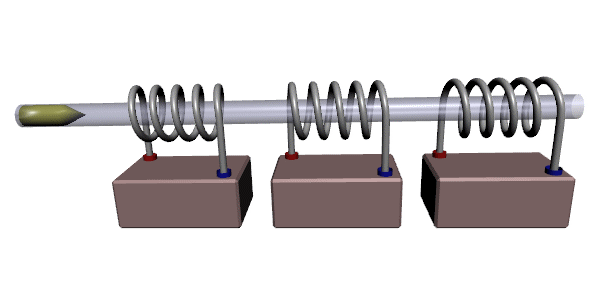 Major Tom, on 02 April 2012 - 07:06 AM, said:
Major Tom, on 02 April 2012 - 07:06 AM, said:
Well, what we know from Gauss Rifles is that such large capacitor banks are highly explosive if hit by enemy fire.
Smaller PPC Capacitors were developed and deployed in 3060; they were not themselves sufficient to power the weapon, but they did add ~50% damage.
Given what hitting the Gauss Rifles' capacitors can do and how much more power a PPC would likely need to be able to impart significant damage at range through an atmosphere, not using such powerful and volatile capacitor banks is arguably a safety decision - the increased heat seems a relatively small price to pay for decreasing the likelihood of a stray shot blowing the whole 'Mech to bits.
 Major Tom, on 02 April 2012 - 07:06 AM, said:
Major Tom, on 02 April 2012 - 07:06 AM, said:
This is a basic coilgun ("Gauss Gun"):

The coils are magnetized when an electrical current passes through them. This draws the (typically ferromagnetic) projectile to them; after the projectile passes through the current coil, the current coil is switched off and the next one is turned on,
Unlike railguns, the armature/projectile and the coils do not need to be in direct physical contact. As such, the design can include a barrel assembly that can include rifling.
Also:
Quote
Given that BattleMech armor is essentially a futuristic version of Chobham or Kanchan armor (both of which are more effective against such "long rod penetrators" than the older RHA technology) and that the canon illustrations show relatively stubby projectiles (as opposed to long, thin rods), it seems reasonable to believe that the Gauss rifles are exactly that - rifled Gauss Guns.
































